11th June 2025
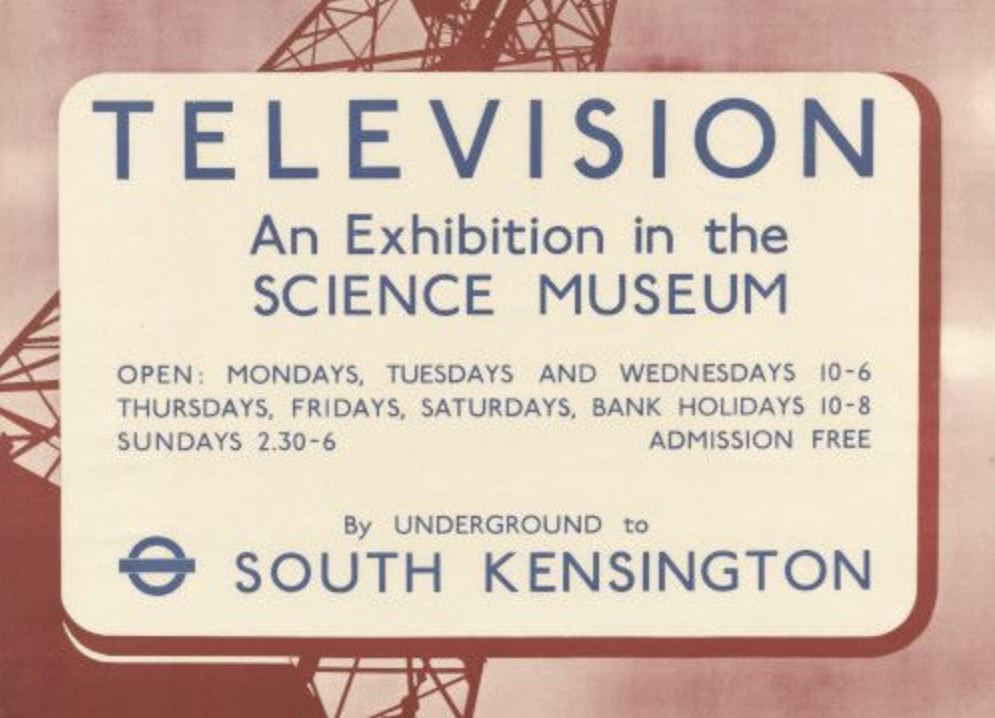
John Wyver writes: Friday 11 June 1937 saw the nation’s broadsheets carry news of the opening the previous day of an exhibition of television at London’s Science Museum in South Kensington. Television in the summer of 1937 was still a more common spectacle in department stores and pubs than in homes. And it was extended as a public form in this hugely popular presentation.
As the Manchester Guardian reported:
The BBC, the leading manufacturers, and the science museum have organised the exhibition, and its objects are to illustrate the general principles underlying technicalities and to foster appreciation of television as a home entertainment.
In fact, the Science Museum offered a last hurrah for showcasing television’s origin in the workshop and its identity as a technological wonder. In future exhibitions, such as Radiolympia later in the year and in the 1938 Ideal Home Exhibition, it would be celebrated more as a medium and as an element of domestic modernity.
read more »
10th June 2025
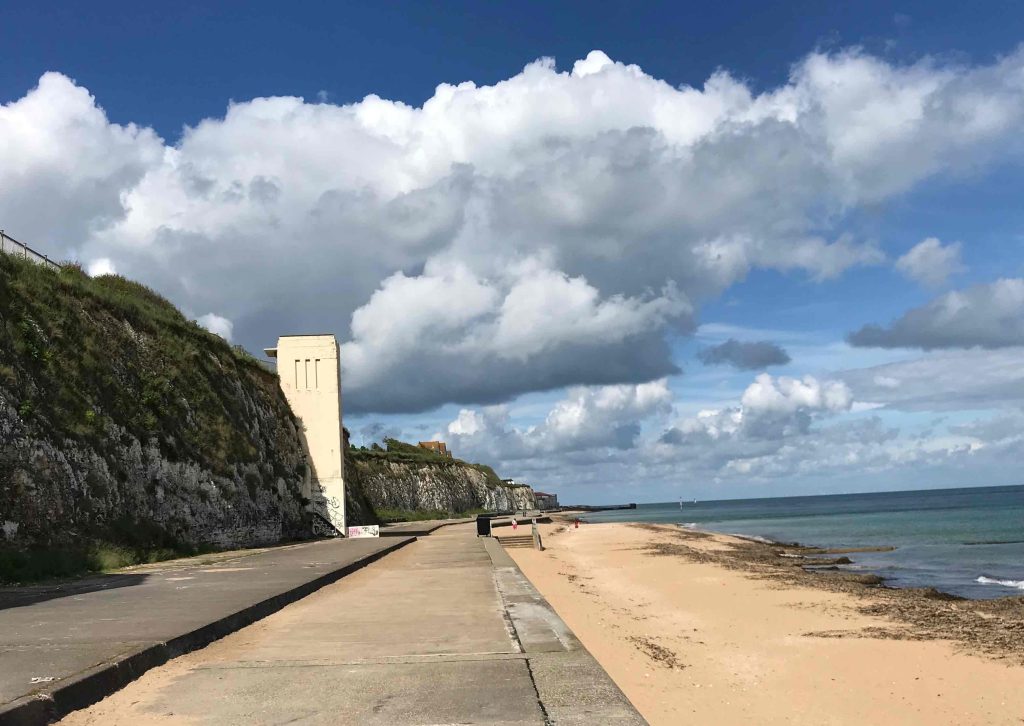
John Wyver writes: On the evening of Friday 10 June 1938, studio A at Alexandra Palace hosted artist couple John Piper and Myfanwy Evans presenting A Trip to the Seaside, a short talk about ‘things seen during a recent visit to the seaside’. Included were paintings and drawings by Piper and by their friends Paul Nash and Edward Wadsworth, as well as poetic extracts from Max Beerbohm’s ‘The seaside in winter’, John Meade Faulkner’s ‘Moonfleet’ and, perhaps inevitably, ‘Dover beach’ by Matthew Arnold.
John Piper had been a regular AP presenter in the first months of the service, introducing paintings and sculptures borrowed from London’s commercial galleries. Myfanwy Evans had also appeared on screen before, just once in July 1937, when she recounted a bicycle journey through the Chilterns, which was also illustrated with photographs and articles found along the way.
read more »
9th June 2025
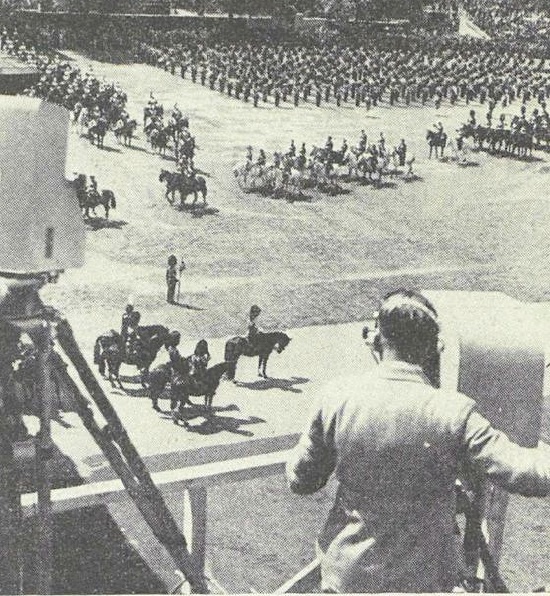
John Wyver writes: On the morning of Thursday 9 June 1938 the BBC’s mobile control room provided an 80-minute outside broadcast from Whitehall of the King’s Birthday Parade, otherwise known as Trooping the Colour.
This was just over a year after the first remote OB of the Coronation procession in May 1937, and the novelty, as well as the reverence for the monarchy, are apparent in the detailed description by Peter Purbeck writing for The Listener.
Purbeck’s words below about the predictability of the event and the importance of this for the OB producer make for an interesting contrast with Grace Wyndham Goldie’s description of the OB from the Theatrical Garden Party of a year later, which was highlighted in a post here a few days ago.
read more »
8th June 2025
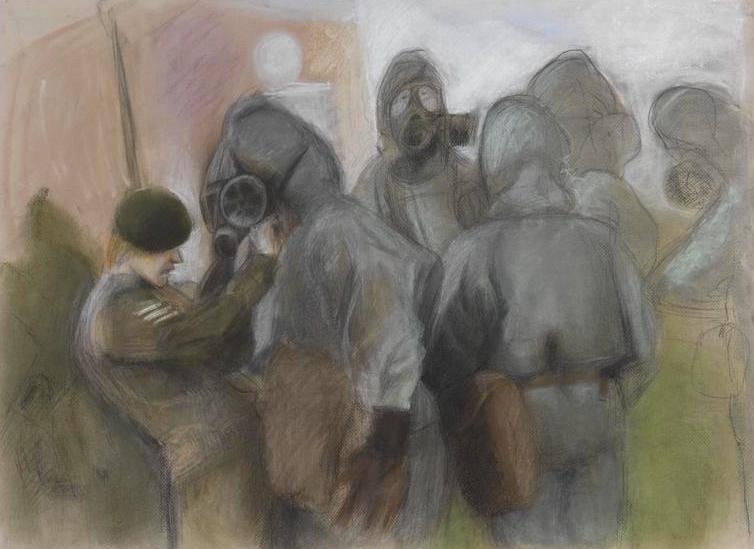
John Wyver writes: Under the bare title of A.R.P., a 14-minute studio programme on the evening of Wednesday 8 June was ‘a demonstration of the use of gas masks’. Sandwiched between a newsreel and the cartoon film Mother Goose Melodies, this had been ‘arranged in co-operation with the Home Office’ and appears to have been the first public information broadcast preparing lookers-in for the anticipated international conflict.
We know little about the broasdcast, apart from that it featured the splendidly named Flight Lieut. Eardly-Wilmot, Mrs Caillard, and Messrs Bowen, Thistle and Radcliffe, and that use was made of two British Movietonews film extracts, ‘Airplanes’ and ‘A.R.P. work street sequence’.
Later in June, the Flight Lieutenant and Mrs Caillard returned to AP to demonstrate how to gas-proof a room, and in October there was a spectacular broadcast showing recommended methods of dealing with an incendiary bomb.
Image: ‘Fitting Anti-gas Clothing’ by Jane Stanton, date unknown; a Sergeant of the Women’s Royal Army Corps helps to fit a gas mask to a recruit; from the collections of the Imperial War Museums. Scanned and released on the IWM Non Commercial Licence. Photographs or artworks created by a member of the forces during their active service duties are covered by Crown Copyright provisions. Faithful reproductions may be reused under that licence, which is considered expired 50 years after creation date.
[OTD post no. 173; part of a long-running series leading up to the publication of my book Magic Rays of Light: The Early Years of Television in Britain in January 2026.]
7th June 2025

John Wyver writes: Seven months after the start of the schedule from Alexandra Palace, on Monday 7 June television’s offerings were a typical mix of, in the afternoon between 3pm and 4pm, a local OB, a newsreel and an upscale variety line-up, followed by an evening hour from 9pm of a short studio feature, a recital, another newsreel, and the BBC Dance Orchestra in concert.
There was no sense of building a schedule across either session, and no links between the disparate elements. By this point there were perhaps a few hundred operational receivers across London, many of which were in dealers’ showrooms, and the twice daily priority for the over-worked, resources-starved AP producers was simply to get something, anything, onto the airwaves.
read more »
6th June 2025
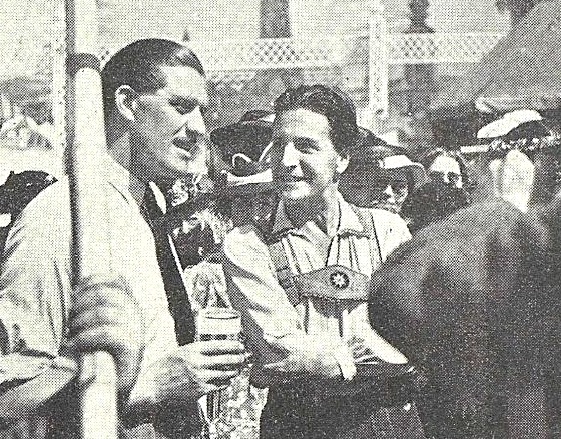
John Wyver writes: For the best part of an hour on the afternoon of Tuesday 6 June 1939 lookers-in were taken off to the gardens of the Ranelagh Club for the annual Theatrical Garden Party. Among those who were observed and encountered were Noel Coward, Ivor Novello (above, with Leslie Mitchell), Diana Wynyard and playwright Clemence Dane.
Also making appearances were Telegraph journalist L. Marsland Gander; Mrs Smithers, recorded as ‘a member of the public’; ‘a lady viewer’; and Euphan MacLaren’s children. No, me neither, but Ms MacLaren apparently ran a stage school for young people , but it’s unclear if the children were offspring or pupils.
read more »
5th June 2025
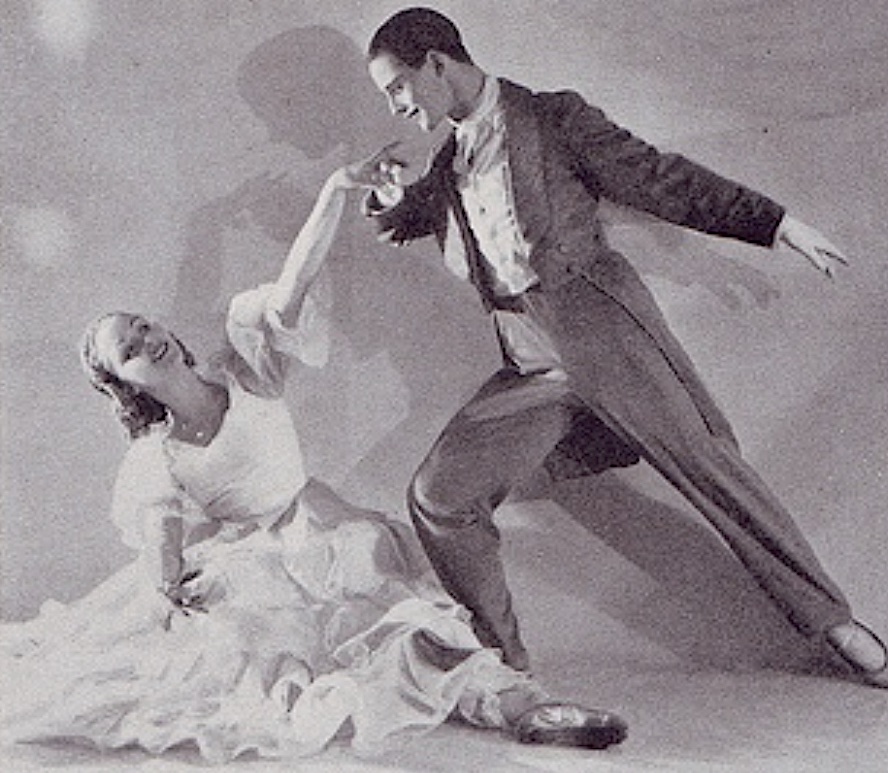
John Wyver writes: Television’s main event on the evening of 5 June 1938 was a presentation of two modern dance works by the company Ballets Jooss. Founded in 1933 by choreographer Kurt Jooss, the group had fled Nazi Germany and been given a home in England at Dartington Hall. Touring extensively through the 1930s and during the war, Ballets Jooss was celebrated for a modernist combination of classical ballet and expressionist-inflected theatre.
The broadcast on 5 June was the company’s second Alexandra Palace appearance, the first having been on the afternoon of Tuesday 24 May, when the comic ballet The Seven Heroes was given. For the second transmission, the programme was, first, The Big City and then A Ball in Old Vienna, a light-hearted work made by Jooss in 1932. This was danced for the cameras by a cast led by Noelle de Mosa as the debutante and Hans Zuellig as her admirer (above), while the same pair also led the company for The Big City.
read more »
4th June 2025
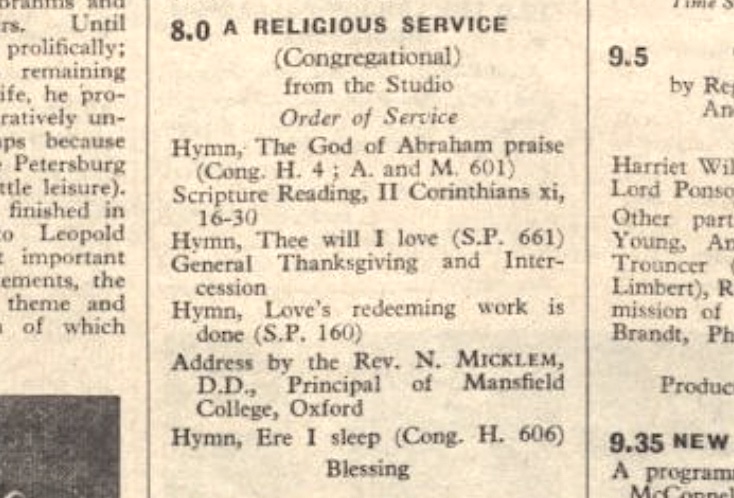
John Wyver writes: One of the unremarked aspects of the pre-war television service (of which there are many) is the fact that from the start of 1939 around an hour of either the National of Regional Programme radio broadcasts were carried on the television frequency just ahead of the 9pm start of vision programming.
Mostly this hour was of classical music or variety, but on Sunday 4 June 1939 there was the religious service detailed in the Radio Times clipping above. Such services whether from the studio, as here, or as an OB from a church, were not otherwise carried on pre-war television, and only featured from late 1946 onwards.
The service was followed by The Week’s Good Cause, in this case on behalf of Central Council for the Care of Cripples, presented by (in language that is totally inappropriate today) ‘an unknown cripple’. After which there was ten minutes of the weather forecast, the forecast for shipping, and The Second News, broadcast simultaneously with the National Programme from the Daventry transmitter.
read more »
3rd June 2025
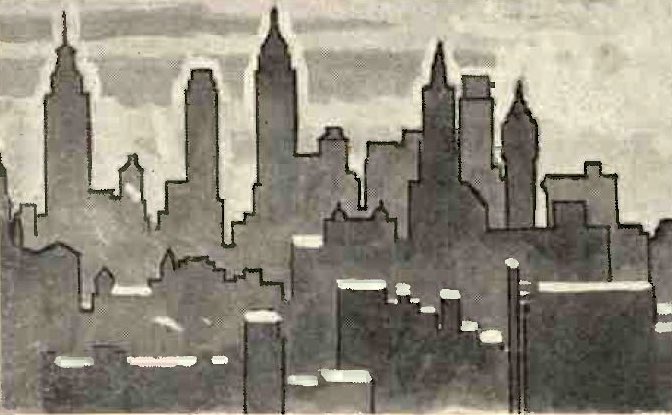
John Wyver writes: By the early summer of 1935 the BBC’s 30-line transmissions were and confident and on oc casion truly ambitious. Overseen by producer Eustace Robb, these broadcasts marshalled an extensive range of talents and technical capabilities that, by comparison with later systems, were basic and yet still with the capacity for striking visual effects.
Perhaps the closest we can approach one of Robb’s ambitious broadcasts is through the camera script of the 45-minute broadcast Skyline, published by the monthly Television in July 1935. Transmitted at 11pm on Monday 3 June (and played again two evenings later), the programme was rehearsed for just two and a half hours that morning.
read more »
2nd June 2025
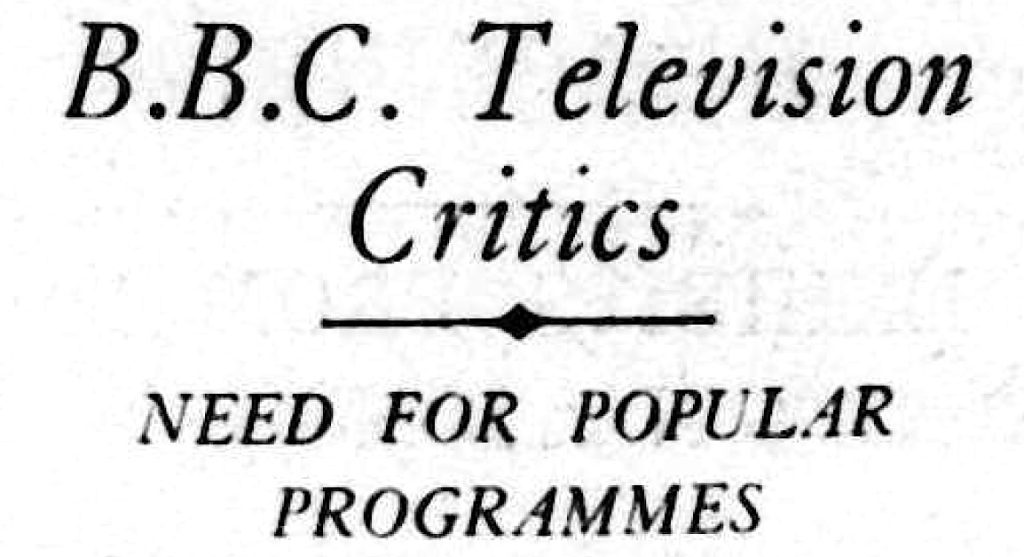
John Wyver writes: Some 18 months after its start, the official BBC Television service from Alexandra Palace was still struggling to attract viewers. On Thursday 2 June 1938, the Daily Telegraph’s well-informed radio correspondent L. Marsland Gander penned a detailed analysis of the challenges facing the Corporation’s new venture. As he wrote:
Judging from the criticisms that reach me, the BBC is still failing to please its television audience with any consistency. I think there may be a two-fold reason for this.
In the first place, although only two or 2 1/2 hours of transmission are given daily, the BBC is attempting to squeeze in items to appeal to all tastes. Secondly, the BBC programmes are so often built on more earnest and less popular lines than the typical cinema bill.
As an alternative to the impossible effort to please everybody, I suggest that it would be better to seek a common denominator and cater for the majority.
read more »









